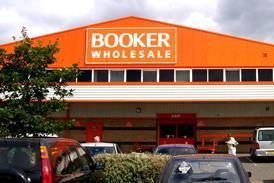
Profit warnings at UK retailers ramped up in the final ‘golden quarter’ of the year as consumer confidence remained under pressure.
London-listed retailers issued seven profit warnings in the three months to 31 December, a significant increase from the one warning in the third quarter, according to EY-Parthenon’s latest Profit Warnings report.
Although the total number of warnings for the sector decreased from 24 in 2023 to 20 in 2024, the proportion of listed retailers issuing warnings only saw a marginal decline, from 39% to 38%.
Half of all FTSE retailers’ profit warnings in 2024 cited weaker confidence as a leading factor.
Pets at Home, Frasers Group and Shoe Zone were three of the FTSE retailers to warn about lower profits than expected in the final quarter of 2024 as businesses worried about the impact of tax rises and increased labour costs in the wake of October’s budget.
“Profit warnings in the retail sector remained prevalent in 2024,” said Silvia Rindone, EY partner and UK&I retail lead. “Whilst festive trading reports were broadly positive, they highlight that demand is only part of the story.
“Despite an increase in disposable incomes in 2024, consumer confidence has been slow to rebound following the cost of living crisis, resulting in a disappointing end to the year for many retailers.
“It’s clear that shoppers are willing to spend if the price is right and the proposition is strong. However, retailers’ uncertainty over how much rising costs can be offset through automation and efficiency savings, or passed on in price increases, is making them almost universally cautious about the year ahead. Higher employment costs and the investment needed to adapt to changing consumer behaviour will challenge every retailer during 2025.”
The report also highlighted that three-quarters (75%) of FTSE personal goods companies issued a warning in 2024 (10 warnings in total), while more than half (52%) of FTSE household goods and home construction companies also warned on profits (19 warnings in total).
Across all sectors, one in five (19%) UK-listed companies issued a profit warning in 2024, the third-highest annual proportion in 25 years, behind only the 2020 pandemic (35%) and the impact of the dotcom bubble burst and 9/11 in 2001 (23%).
By the end of 2024, 274 profit warnings had been issued – including 71 in Q4 – down slightly from the 294 issued during 2023.
Jo Robinson, EY-Parthenon partner and UK&I turnaround and restructuring strategy leader, added: “It’s clear that companies have faced an extraordinary succession of forecasting challenges since the pandemic, contending with interconnected disruptions to supply chains, material and energy costs, and the labour market, as well as higher interest rates. 2024 was also an exceptional year for global geopolitical uncertainty and policy upheaval, with a record level of profit warnings linked to contract and spending delays as businesses held back from recruitment and investment. As a result, companies’ forecasting strategies need to respond to both short-term policy changes and deeper structural issues.
“Ordinarily, a sustained increase in company earnings pressures would be followed by a significant rise in insolvencies. But this cycle has been different. The availability of cheap, long-term debt and pandemic support provided breathing space for both businesses and stakeholders to explore consensual solutions and new restructuring options. However, more companies are now reaching a tipping point as cumulative pressures build. We don’t expect a huge uptick in insolvency levels in 2025, but we are now seeing more distress, and more stakeholders viewing insolvency processes as a real option in finding the best path forward.”
The Profit Warnings report follows a “worrying surge” in the number of UK businesses entering ‘critical’ financial distress in the final quarter of 2024. On Friday, the latest Red Flag Alert report from Begbies Traynor reported that ‘critical’ financial distress rose by 50.2% to 46,853 companies over the three months, underscoring a deteriorating outlook.



















No comments yet